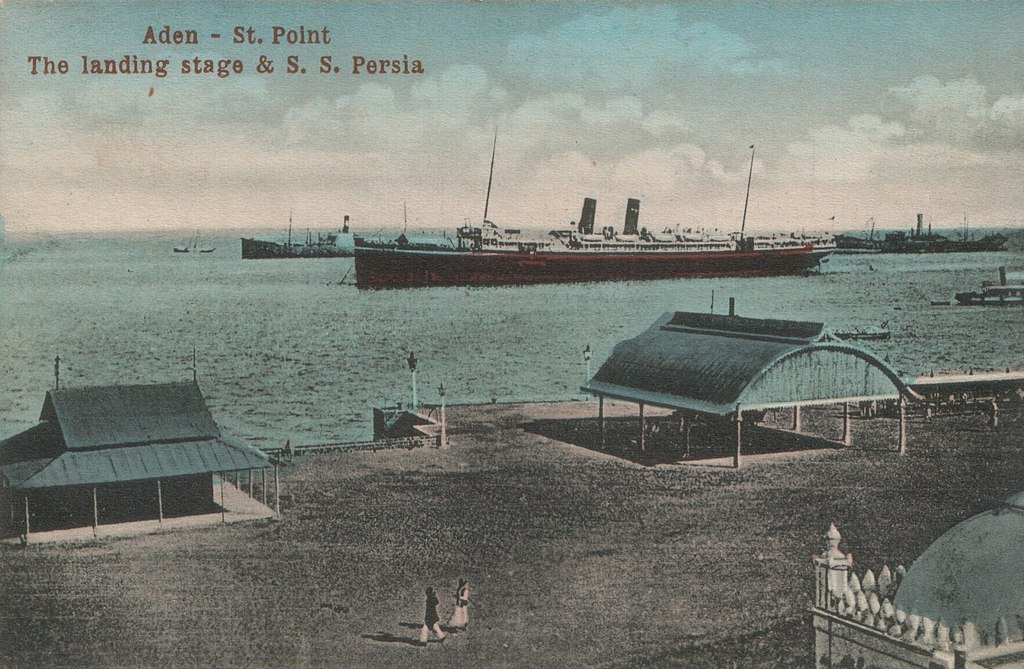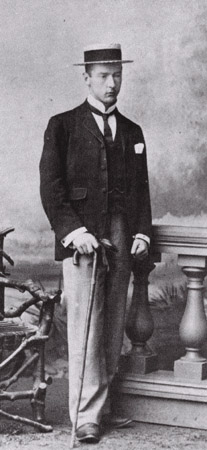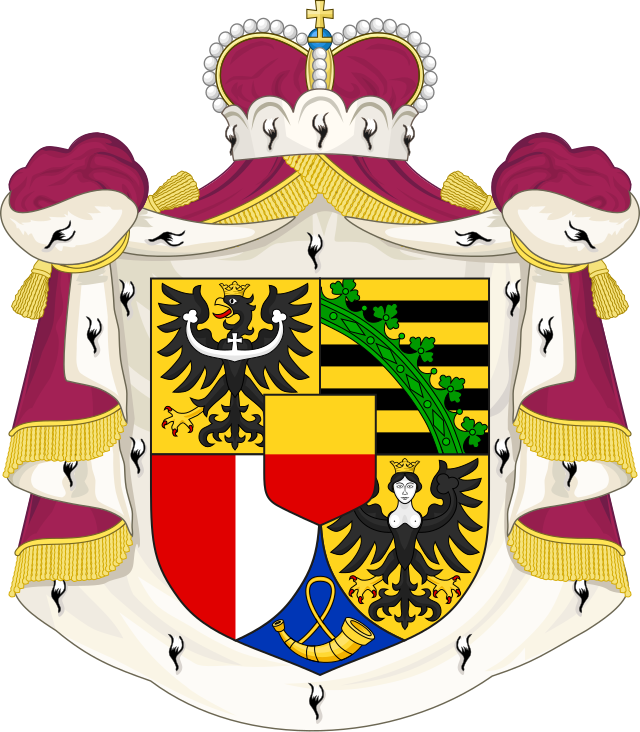by Susan Flantzer
- Michael Hicks-Beach, Viscount Quenington
- Timeline: April 1, 1916 – April 30, 1916
- A Note About German Titles
- April 1916 – Royals/Nobles/Peers/Sons of Peers Who Died In Action
Michael Hugh Hicks-Beach, Viscount Quenington
Michael Hugh Hicks-Beach was born on January 19, 1877 at 40 Portman Square in London, England. He was the only son and the second of the four children of Sir Michael Hicks-Beach, a Member of Parliament and Chancellor of the Exchequer, and his second wife, Lady Lucy Catherine Fortescue, daughter of Hugh Fortescue, 3rd Earl Fortescue. Michael had one elder sister and two younger sisters.
- Lady Eleanor Hicks-Beach (1875 – 1960), married Lt.-Col. Sir John Keane, 5th Baronet; had issue
- Lady Susan Hicks-Beach (1878 – 1965), unmarried
- Lady Victoria Hicks-Beach (1879 – 1963), unmarried
Michael was educated at Eton College and then attended Christ Church College at the University of Oxford. He served as a Captain in the 4th (Militia) Battalion of the Gloucestershire Regiment at St Helena during the Second Boer War. From 1906 until his death, Michael was a Conservative Member of Parliament from Tewkesbury and was a board member of Lloyds Bank. In 1915, when his father was created 1st Earl St Aldwyn, Michael then held the courtesy title Viscount Quenington, one of his father’s subsidiary titles.
On September 28, 1909, Michael married Marjorie Dent-Brocklehurst of Sudeley Castle, the castle where Catherine Parr, the widow of King Henry VIII, lived the last years of her life. The couple had two children:
- Lady Delia Mary Hicks-Beach (1910 – 2006), married Brigadier Sir Michael Dillwyn-Venables-Llewelyn, 3rd Baronet; had issue
- Michael John Hicks-Beach, 2nd Earl St Aldwyn (1912 – 1992), married Diana Mary Christian Mills, had issue including Michael Henry Hicks-Beach, 3rd Earl St. Aldwyn
At the start of World War I, Michael joined the Royal Gloucestershire Hussars as a 2nd Lieutenant and served during the Gallipoli Campaign. After evacuation from Gallipoli, the Royal Gloucestershire Hussars went to Egypt where took part in many of the battles that formed the Sinai and Palestine Campaign, and Michael served with them as a Lieutenant and an Adjutant.
Michael’s wife Marjorie (Viscountess Quenington) went to Egypt to serve in the Voluntary Aid Detachment (VAD), a voluntary organization providing field nursing services, and died from typhus in Cairo, Egypt on March 15, 1916.
About seven weeks later, on April 23, 1916, Michael died of wounds received when serving as Adjutant during the Battle of Katia, 40 miles from the Suez Canal, near Katia, Egypt. He and his wife were buried side by side at the Cairo New British Protestant Cemetery.

Cairo New British Protestant Cemetery; Photo Credit – www.findagrave.com
On April 30, 1916, just a week after Michael’s death, his father Michael Edward Hicks-Beach, 1st Earl St Aldwyn died, and his three year old grandson succeeded him as the 2nd Earl St Aldwyn. A joint memorial was held for Michael Edward Hicks-Beach, 1st Earl St Aldwyn and Michael Hugh Hicks-Beach, Viscount Quenington on May 4, 1916 at St. Margaret’s Church, Westminster, London.
*********************************************************
Timeline: April 1, 1916 – April 30, 1916
- April 23 – Battle of Katia in Ogratina, Katia and Duidar east of the Suez Canal and north of El Ferdan Station in present-day Egypt
- April 27 – 29 – German gas attack on British troops at Hulluch, France
- April 29 – British forces under siege at Kut-al-Amara, Mesopotamia (modern Iraq) surrender to the Ottomans, first Siege of Kut ends
*********************************************************
Many German royals and nobles died in World War I. The German Empire consisted of 27 constituent states, most of them ruled by royal families. Scroll down to German Empire here to see what constituent states made up the German Empire. The constituent states retained their own governments, but had limited sovereignty. Some had their own armies, but the military forces of the smaller ones were put under Prussian control. In wartime, armies of all the constituent states would be controlled by the Prussian Army and the combined forces were known as the Imperial German Army. German titles may be used in Royals Who Died In Action below. Refer to Unofficial Royalty: Glossary of German Noble and Royal Titles.
24 British peers were also killed in World War I and they will be included in the list of those who died in action. In addition, more than 100 sons of peers also lost their lives, and those that can be verified will also be included.
*********************************************************
April 1916 – Royals/Nobles/Peers/Sons of Peers Who Died In Action
The list is in chronological order and does contain some who would be considered noble instead of royal. The links in the last bullet for each person is that person’s genealogical information from Leo’s Genealogics Website or to The Peerage website. If a person has a Wikipedia page, their name will be linked to that page.
Captain and Brevet Major The Honorable Josceline Foljambe
- son of Cecil Foljambe, 1st Earl of Liverpool and Susan Louisa Cavendish
- born October 16, 1882
- unmarried
- Captain and Brevet Major in the Oxfordshire and Buckinghamshire Light Infantry
- killed in action on April 6, 1916 at Kut-el-Amara, Iraq, age 33
- http://www.thepeerage.com/p3598.htm#i35977

Hugo Francis Charteris, Lord Elcho
- eldest son of Hugo Charteris, 11th Earl of Wemyss and Mary Constance Wyndham
- born December 28, 1884
- married February 1, 1911 Lady Violet Manners, daughter of Henry Manners, 8th Duke of Rutland and Marion Lindsay, had two sons including David Charteris, 12th Earl of Wemyss
- Captain in the Royal Gloucestershire Hussars Yeomanry
- killed in action on April 23, 1916 at Katia, Sinai, Egypt
- brother The Honorable Yvo Charteris killed in action on October 17, 1915, age 31
- http://www.thepeerage.com/p1090.htm#i10894
Michael Hicks-Beach, Viscount Quenington and Member of Parliament
- son of Michael Hicks-Beach, 1st Earl St Aldwyn and his wife Lady Lucy Catherine Fortescue
- born January 19, 1877 in London, England
- married September 28, 1909 Marjorie Brocklehurst, had two children including Michael Hicks-Beach, 2nd Earl St Aldwyn who succeeded to the earldom at age 3 upon his grandfather’s death, one week after his father’s death
- Captain and Adjutant in the Royal Gloucestershire Hussars Yeomanry
- died from wounds received in action on April 23, 1916 at Katia, Sinai, Eqypt
- http://www.thepeerage.com/p5472.htm
Georg, Freiherr von Saalfeld
- eldest son of Prince Ernst of Saxe-Meiningen and his morganatic wife Katharina Jensen, created Freifrau von Saalfeld
- born June 11, 1893 in Florence, Italy
- unmarried
- killed in action on April 29, 1916 at La Bassee, France, age 22
- brother Ernst, Freiherr von Saalfeld killed in action on May 28, 1915
- http://thepeerage.com/p11087.htm#i110868








































